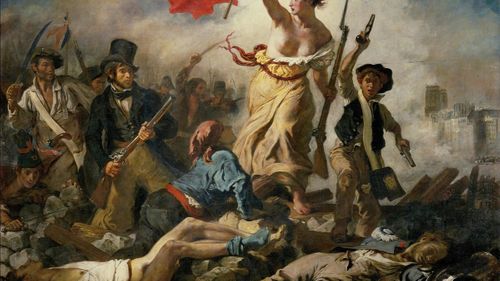An Introduction to Delacroix: A Revolutionary Spirit Behind the Canvas
Mar 19, 2024 · 2 mins read
0
Share
Eugène Delacroix, the master of Romanticism, painted with a fervor that set canvases ablaze with movement, color, and emotion, capturing the spirit of an era.
Save
Share
Born in 1798, Delacroix was a child of the French Revolution, an event that infused his work with themes of liberty, struggle, and human dignity.
Save
Share
His iconic work "Liberty Leading the People" is a visual anthem of revolution, with Lady Liberty herself charging forward, a symbol of hope amidst the chaos of rebellion.
Save
Share
Delacroix's artistry was not confined to the political; he explored the exotic and sensual in works like "Women of Algiers," inviting 19th-century Parisians into a world of Eastern opulence.
Save
Share
A master of color, Delacroix's palette was as bold as his subjects, with lush reds and deep blues that seem to pulse with life, a stark contrast to the neoclassical restraint of his contemporaries.
Save
Share
His fascination with the forces of nature is evident in "The Sea of Galilee," where the tumultuous waters seem to roar off the canvas, a testament to his ability to evoke the sublime.
Save
Share
Delacroix's influence extended beyond painting; he was a prolific writer, whose journals offer a window into the mind of a genius, as passionate in prose as he was in paint.
Save
Share
His legacy is one of passion and innovation, inspiring future generations of artists, from the Impressionists to the Symbolists, to break free from convention and express their innermost emotions.
Save
Share
Delacroix's work is a celebration of the human spirit, a canvas where the personal, political, and mythical collide, creating a rich tapestry of human experience.
Save
Share
Today, Delacroix remains a titan of art history, his works not just paintings but powerful statements about the beauty and complexity of life, urging us to live with the same intensity and color.
Save
Share
0
